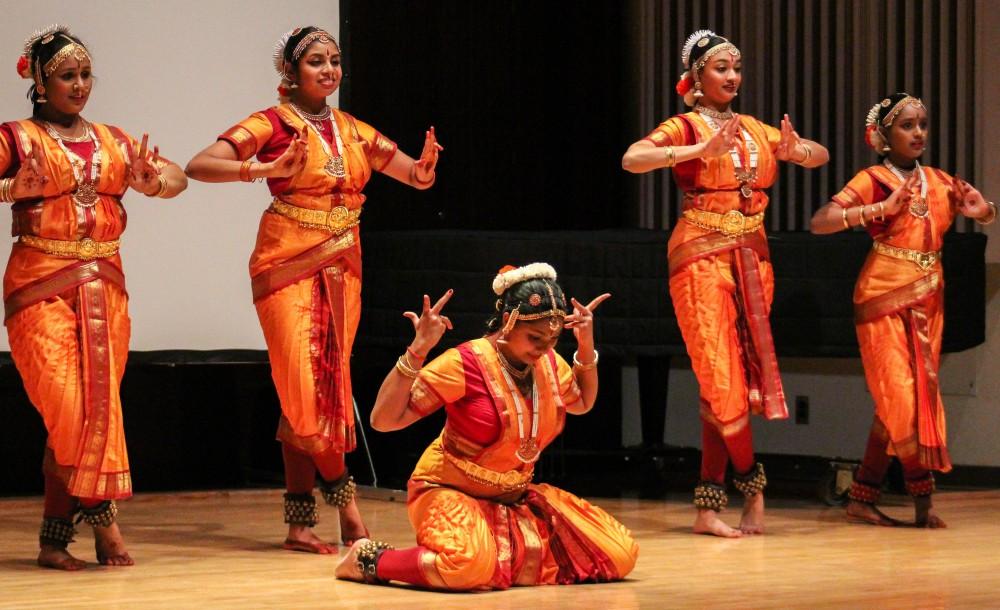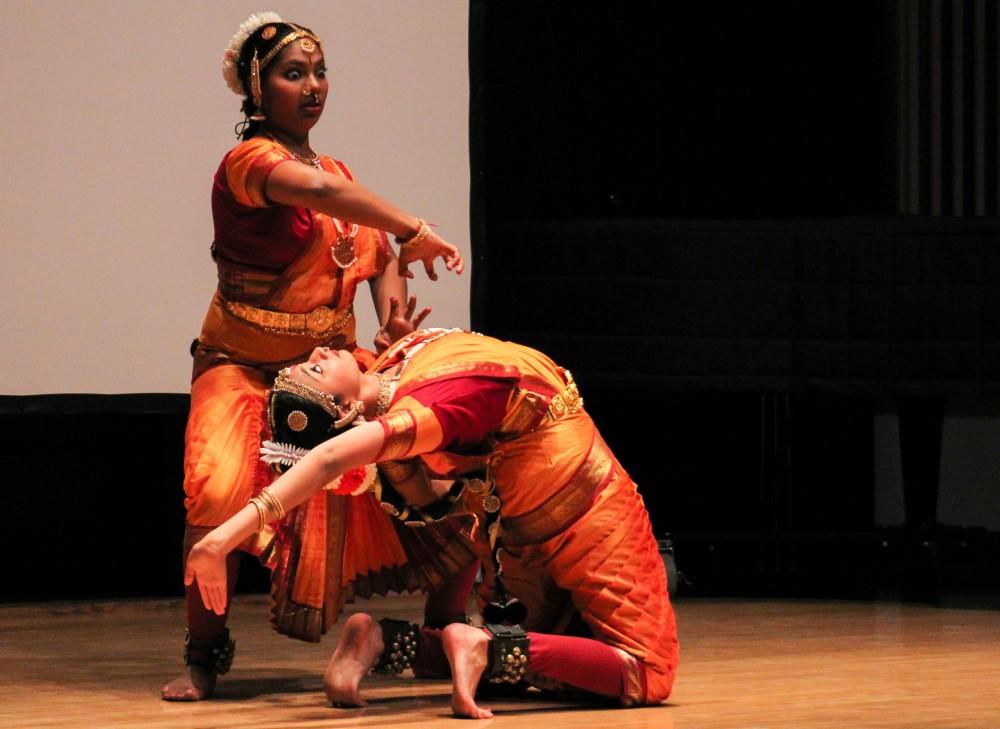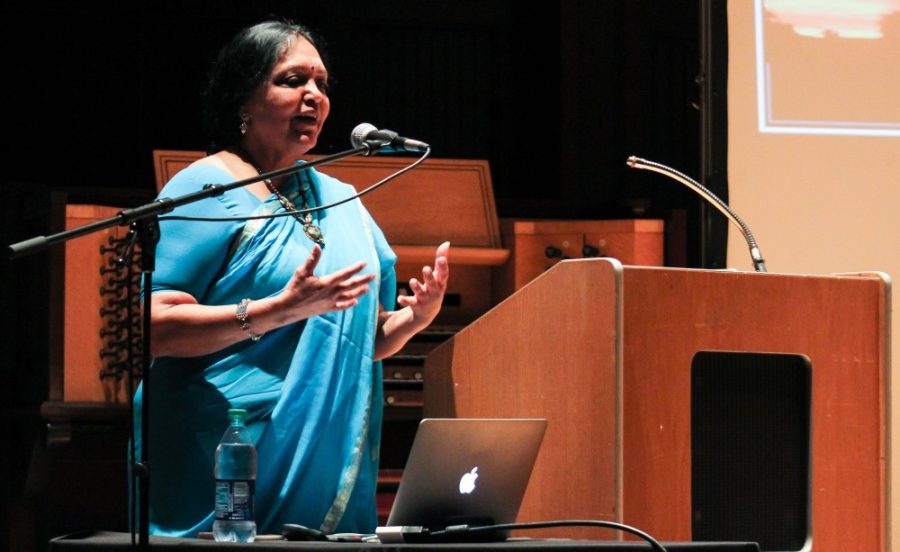On a dimly lit wooden stage in the Fred Fox School of Music, University of Florida professor Vasudha Narayanan spoke about Hindu culture in Southeast Asia, the Caribbean and America on Tuesday, March 13.
Narayanan teaches in the religious studies department of UF and was a former president of the American Academy of Religion. She has written and edited seven books, as well as many articles and encyclopedia entries.
Narayanan wore a turquoise traditional Indian silk outfit and gave a brief history of the Hindu culture using pictures of ancient statues and temples from all around the world. Following her talk, Indian dancers filled the stage wearing traditional Indian silk costumes and jewelry.
“Its not simply the Hindu religion but many of us should be literate about religions around the world,” Narayanan said. “The religions are not out there in different parts of the world but they are right here in our backyard.”
Narayanan explained how understanding our own traditions and cultures first then learning about other traditions and cultures allows humans to understand one another better.
RELATED: Spiritual healing in the desert
“To understand Hinduism is to understand our own history slightly better and to understand other cultures also,” Narayanan said.
Narayanan recalls seeing a sign in the hallway reading, “one voice can make a song,” comparing the one voice to a small number of people in a culture. The small group, like Indians, contributes to culture in the larger mosaic of American traditions and cultures.
“We’re human beings; we connect more than just professionally,” Narayanan said. “We connect through our entire beings and to know each others culture and world views.”
Kalashri Asha Gopal, the owner of the Arathi School of Dance in Phoenix, brings Indian culture to America through teaching Indian American children the art of traditional Indian dance.
She comes to Tucson every week to teach a class. Gopal has earned a spot in the Guinness Book of World Records for graduating the most girls from her dance school.
Traditional Indian dance is over 3,000 years old and is danced to tell a story about the gods and goddesses according to Narayanan. Children begin lessons when they are 5 years old in order to master the disciplined art form.

“The dance is very rigid,” Gopal said. “It’s the only style which has a textbook of its own where everything is written down.”
Dancers must incorporate footwork, facial expressions and hand signals in order to tell the story.
RELATED: Creating public relations professionals
Gopal said the costumes are hand-woven and hand-stitched by special tailors in India who have been in the costume making business for generations.
With many ancient traditions to learn about, there are many ways students at the University of Arizona can study the Indian culture.
Caleb Simmons, a UA religious studies professor, said students can get involved in the Hindu and Indian cultures by taking classes offered on campus or joining the Indian Student Association.

“[Students can] always more broadly leave campus and go to the Hindu temples,” Simmons said.
The Govinda and Swaminarayan temples are some near the UA that Simmons suggests visiting. Inside the temples are welcoming Hindus that are willing to teach visitors what they believe and what they do, according to Simmons.
Aside from having a “really cool” culture, Simmons said he believes students should learn about India and Hinduism because India is one of the most populated countries in the world and is emerging into a powerhouse on the world market.
“If you look at a lot of global industries and global technologies, like Microsoft, their CEOs are Indian or coming from that background,” Simmons said.
UA faculty is expected to expand in South Asian studies by starting a center for South Asia on campus, according to Simmons.
“If you’re interested in South Asia, Hinduism or India, there are resources here,” Simmons said.
Simmons said he wants to help students expand their intellectual horizons by not only studying the various facets of Hindu religious thought and tradition but by taking them directly to the source of his research, according to UA parent and family programs.
“I think this is extremely important,” Narayanan said.
In addition to offering courses on the religions of the world, the Department of Religious Studies and Classics regularly presents lectures, talks and film screenings on topics related to global religions.
For more information visit religion.arizona.edu
Follow Daily Wildcat on Twitter









